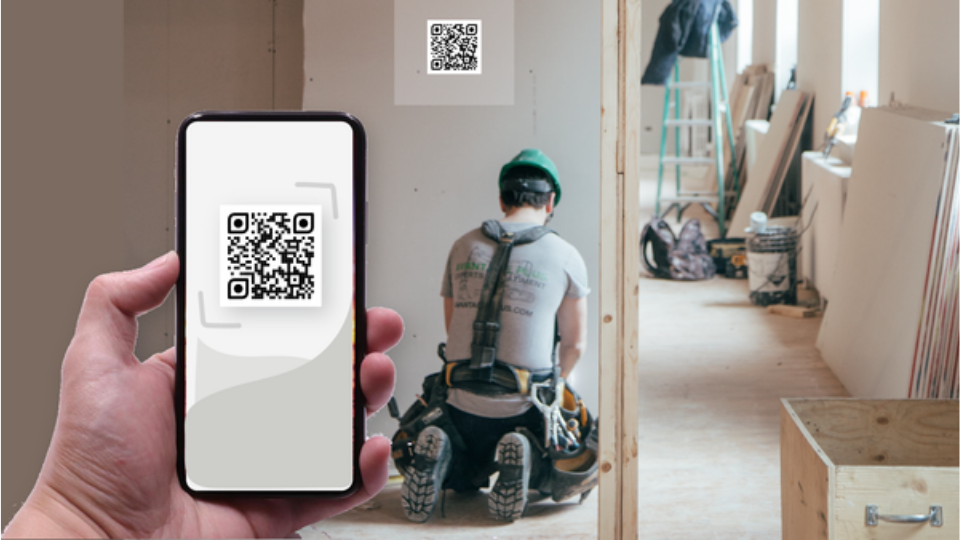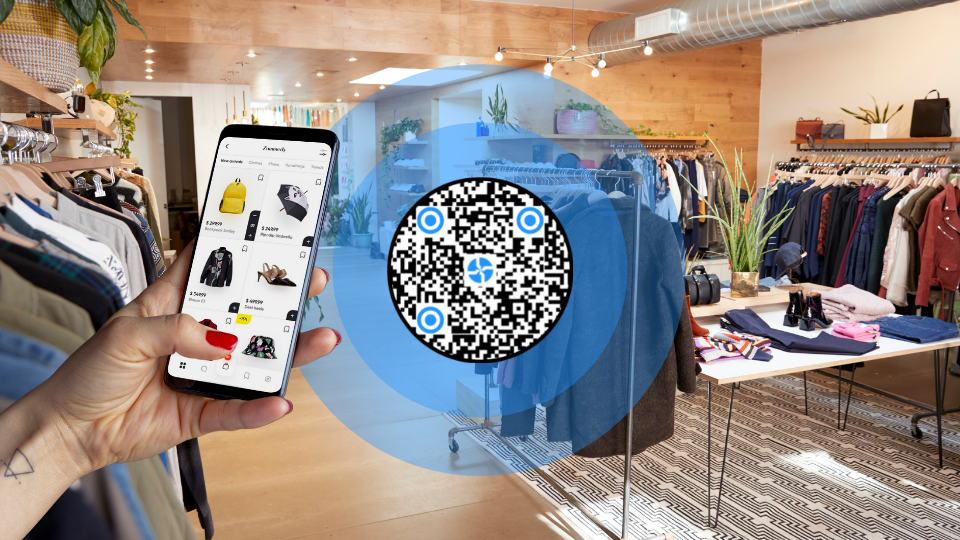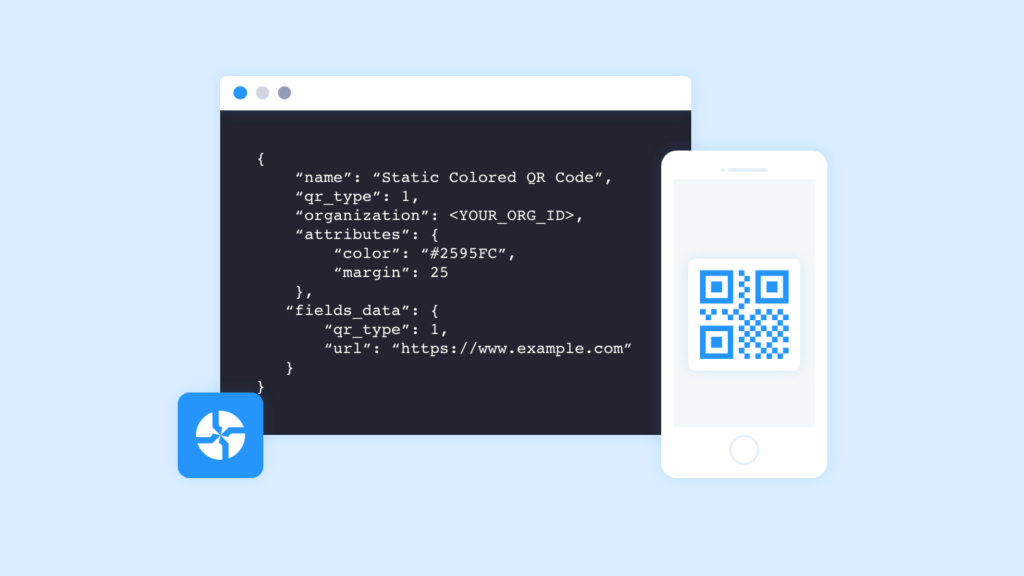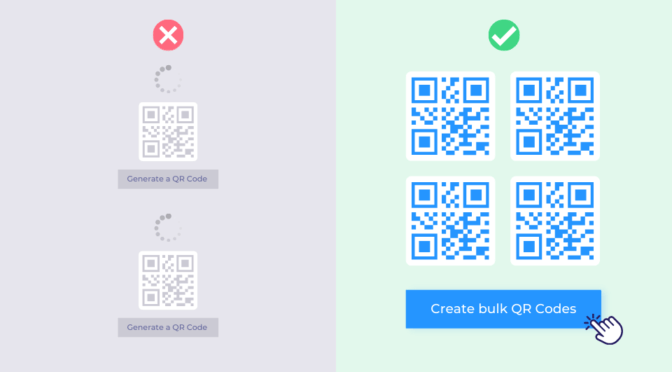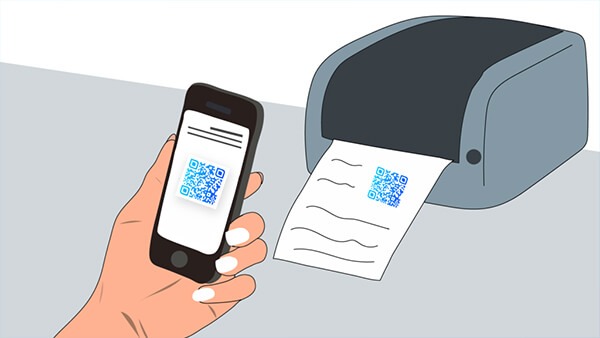Construction sites are typically manually intensive. This includes carrying blueprints around, checking on worker progress and attendance, or tracking assets and building materials.
These factors can slow down a project’s progress.
Here’s why,
- The construction industry generates massive amounts of data from the workers’ end, logistics, or multiple projects.
- Currently, construction industries rely on manual data collection. This leads to inaccurate, insufficient data. It’s hard to rely on these for emergency/safety-related issues.
As with every other sector, the construction industry can benefit from eradicating these manual tasks and digitizing them instead.
And no, you don’t need separate tools for all these tasks.
In a ‘one glove fits all’ solution, QR Codes in construction may just be the right answer. QR Code technology has the potential to ease daily routines, avoid mishaps and make bulky documentation a thing of the past.
Continue reading to see how QR Codes in construction can eradicate roadblocks in construction, how to use them at construction sites, and some real-life use cases!

Table of Contents
- Five ways to leverage QR Codes in the construction industry
- Real-life use case of QR Codes in construction
- Frequently asked questions
5 ways to leverage QR Codes in the construction industry
QR Codes in construction can help tackle issues such as maintaining worker training records, tracking employee attendance, assets, and adhering to safety protocols.
Here are 5 popular ways in which you can leverage QR Codes in construction.
- Simplify operational work procedures
- Access and share blueprints
- Track employee attendance
- Track assets and prevent theft
- Share interactive instructions
1. Simplify operational work procedures

Typically, standard operational procedures (Operational Safety Plans) are a must-have at construction sites. But, they are usually bulky, manually intensive to carry, and in a format that needs to be clarified for workers.
If lost or misplaced, these documents cannot be reprinted either.
Here’s how QR Codes can resolve this issue. Place a PDF QR Code across various touch points at your construction side. When a worker or contractor scans the QR Code, they will be redirected to a PDF of the work procedures.
You can also leverage a video QR Code. Convert multimedia like video or images into QR Codes, and let workers scan and watch a video of the standard operational procedures. A well-placed QR code can link your clients to a payment page. A construction accounting software can help you manage project finances. There are specific guidelines for accepting credit card payments as a contractor, and fortunately, you’re allowed to use QR codes for this purpose as long as that channel doesn’t leave your clients open to fraud.
This way, information is structured and relayed in a systematic, easy manner with no hassle or missing documents.
2. Access and share blueprints

An architectural plan or blueprint is key to builders, and they are often different for each section of a construction project. For instance, the blue print of a building’s first floor might differ from the second floor.
There may also be changes in the design as construction progresses. So how do you keep everyone updated?
Using dynamic QR Codes in construction sites helps. Place QR Codes on building sites or on-site offices for workers or contractors to access, and share blueprints with a scan.
If you plan to collect data on progress, feedback from workers, or any other information regularly, you can also use a QR Code for data collection.
A dynamic QR Code can be edited anytime, anywhere, without having to create a brand new QR Code each time.
Also read: How to make a QR Code link to a PDF
Bonus tip: In the case of sensitive documents use Password protected QR Codes. This leads the user to input a password or fill a form before the document is viewed.
3. Track employee attendance

Manually marking the attendance of workers, managers, architects and other construction professionals with standard project management software is not just archaic but also overwhelmingly time-consuming.
Instead, use QR Codes for attendance at the construction site.
It can be placed at the entrance or at a fixed spot at the site. The construction team members and other subordinates can scan and record their attendance or access plans. Using QR Codes for attendance is an effective, digitalized way of marking attendance and filling in everyday tasks. In turn, the data generated can be fed into employee performance review templates, which create parity in terms of how every team member is monitored and assessed. This avoids inaccuracies and also improves satisfaction since every stakeholder has their attendance tracked by the same system. This is as much about recognizing the contribution of hard-working employees as it is about identifying attendance issues efficiently.
Also read: How to create a free attendance QR Code
4. Track assets and prevent theft

According to a study conducted by National Equipment Register (NER), thefts at a construction site can cost anywhere between $300 million to $1 billion.
And only 23% of these are tracked or recovered by law enforcement authorities.
Theft at construction sites can occur due to a lack of project documentation, missing records of assets, and inappropriate equipment identification tags.
And manually tracking assets is as cumbersome as it sounds.
Instead, use QR Codes for asset tracking.
Attach QR Code to each piece of equipment or valuable building construction materials. This prevents theft by keeping track of the equipment and its location.
5. Share interactive instruction manuals

Construction sites often have specific equipment for different uses, such as erecting, scaffolding, or installation.
Referring to a written or printed instruction manual may do the trick, but it may be time-consuming and confusing for the workers. In the era of interactive content, using infographic and visual instruction manuals help.
Use QR Codes on product packaging and equipment to help the team better understand the directions for use.
Using them on heavy and non-heavy-duty construction materials can help. QR Codes on the product package can be redirected to a demo video, the standard website, or a simple form with easy-to-follow visualizations of product installation and usage.
Tip: To prevent repeated scanning, you can easily create a QR Code to download a file and have the team refer the file or manual whenever necessary.

3 interesting real life use cases of QR codes in construction sites
Now that you’ve read about all the different ways in which QR Codes can enhance productivity and save time in your construction sites – here are some real life examples of companies leveraging QR Codes in construction:
1. NYC uses QR Codes for work permits

As early as 2011, NYC introduced QR Codes as a part of their construction permits. These QR Codes on the construction permit allow users to scan and view the type of construction, the identities of the property owner, etc.
Additionally, it also allows people to register any complaints on noise, safety, and violations through the official Department of Buildings website.
2. Longs Peak Hospital in Colorado leveraged QR Codes for operational procedures

Longs Peak Hospital in Colorado made the most of QR Codes during its construction period. QR Codes were pasted on door frames and individual pieces of MEP/equipment. Upon scanning, it would provide the user with information on all the equipment in a particular room.
Installing QR Codes on frames and equipment at the construction site made them easily noticeable. Workers and contractors would scan the QR Code and input any updates, quality control, warranty, or maintenance issues. Uploading this information on a cloud database ensured easier and regular updates for immediate action.
3. Ssangyong E&C used QR Codes for easy communication at their construction sites

Ssangyong Engineering and Construction rolled out QR Codes at the construction site of the Dubai Royal Atlantis Resort and Residence, which permitted workers to check the construction progress in real-time.
Additionally, the QR Codes aligned with their digital construction management platform. Workers scanned QR Code tags placed at different buildings at the construction site. This allowed them to comment on inspection results, record pictures, alert managers regarding the work progress, and visualize cloud data.
Also read: How to create a free QR Code with images and text
Get started with Uniqode’s QR Code solution for your construction site
QR Codes can erase data-related constraints in the construction industry. This also avoids any financial, legal, or safety issues owing to data availability and timely data collection.
With Uniqode’s QR Code generator, you can easily create, manage and deploy QR Codes at construction sites.
Get access to features such as password-protected QR Codes, seamless asset tracking, and gather real-time data from all facets of the construction site.
Improve efficiency, boost productivity, and save time with the best QR Code generator out there.
Click below and explore all the features we have to offer with a free 14-day trial. Or check out the complete list of our paid QR Code generator pricing.

Frequently asked questions about QR Codes in construction
1. What is the cost of a trackable dynamic QR Code for construction companies?
Uniqode’s trackable dynamic QR Codes start as low as $5 a month. There is also a 14-day free trial for you to get started.
2. Do construction sites need QR Codes?
Absolutely! QR Codes can help boost productivity, safety, and efficiency at construction sites in the following ways –
- Quick access to instruction manuals and blueprints.
- Digitized, contactless check-in at construction sites
- Tracking assets
- Sharing interactive manuals for product usage
3. How do you use QR Codes for asset tracking?
QR Codes on product packaging can be used to track and manage assets. One can scan and track equipment by logging into the asset tracking dashboard. Dynamic QR Codes can be used to regularly update and track information.
-
With brands expanding their presence on omnichannel platforms to reach more audiences, learn how QR Codes help brands sync their online and offline marketing strategies to close the loop seamlessly.
-
Trying to build a loyalty program for your brand? Look no further! Check out this complete guide on the best customer loyalty platforms to help pick the best one and foster long-term brand loyalty effectively.
-
Struggling to improve in-store sales and shelf performance rate for your brick and mortar retail store? QR Codes for planograms are the answer you’re looking for.
-
Looking for a design software that fits your requirements? Check out this detailed guide on product packaging design tools with helpful information on how to create an effective packaging design.
-
What led to the surge in the usage of QR Codes in Australia? Is it because of contact tracing or payments? What does the future hold? Let’s find out.
-
Want to know how to add a QR Code API to your app without complex troubleshooting? Read to find out!







